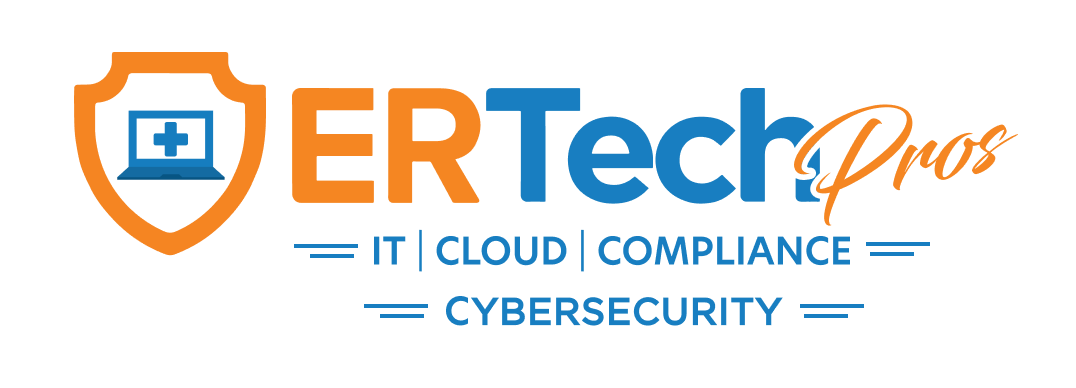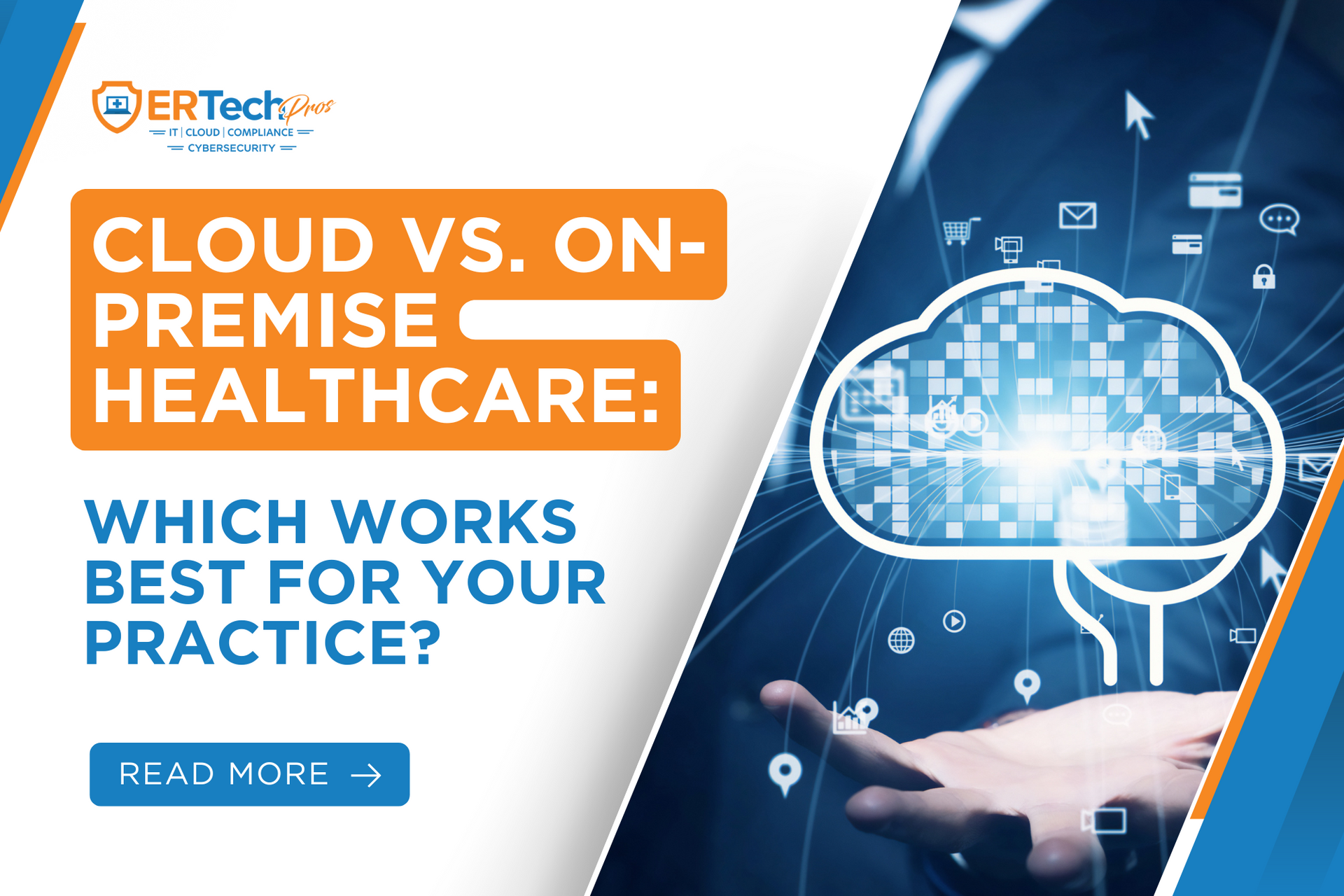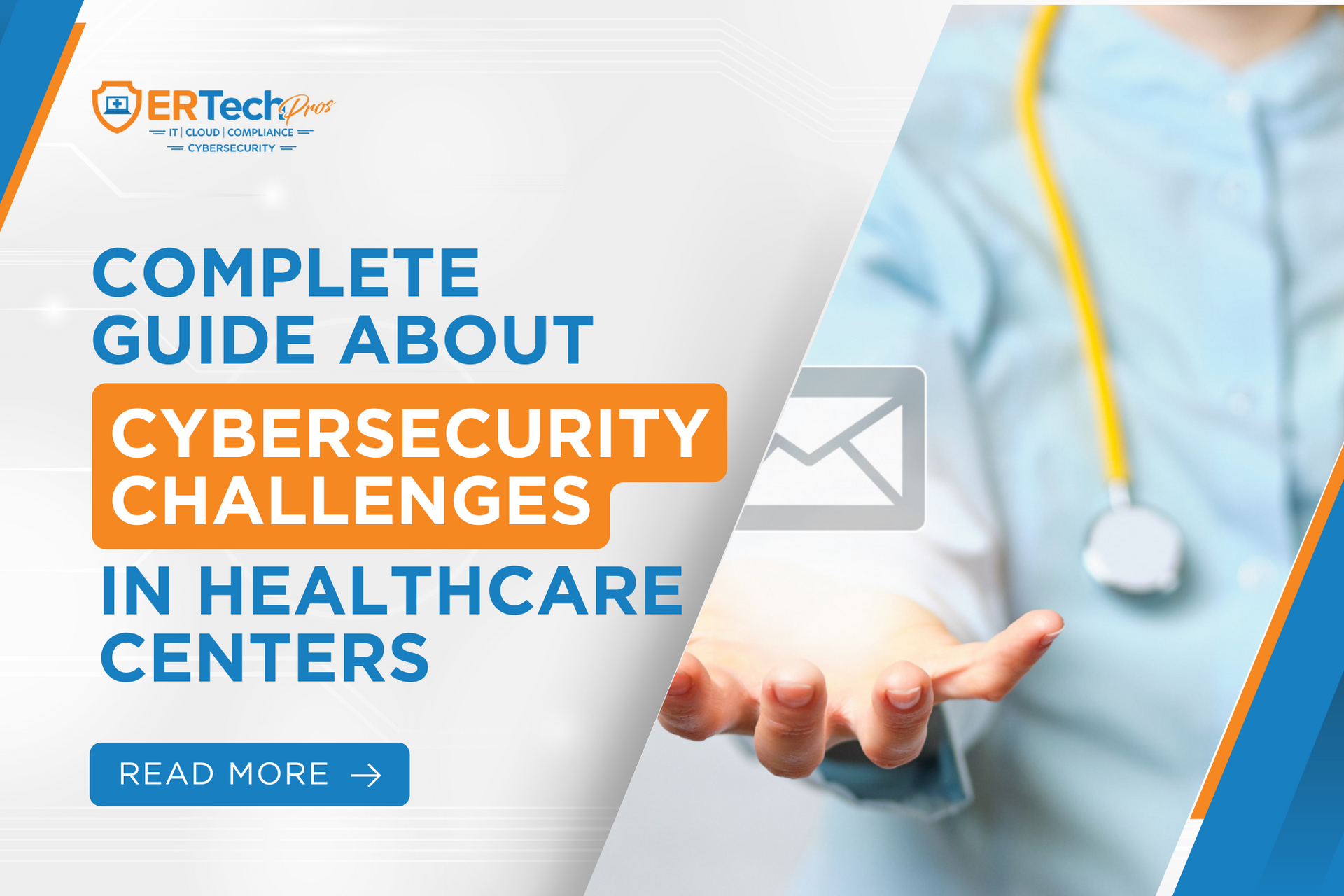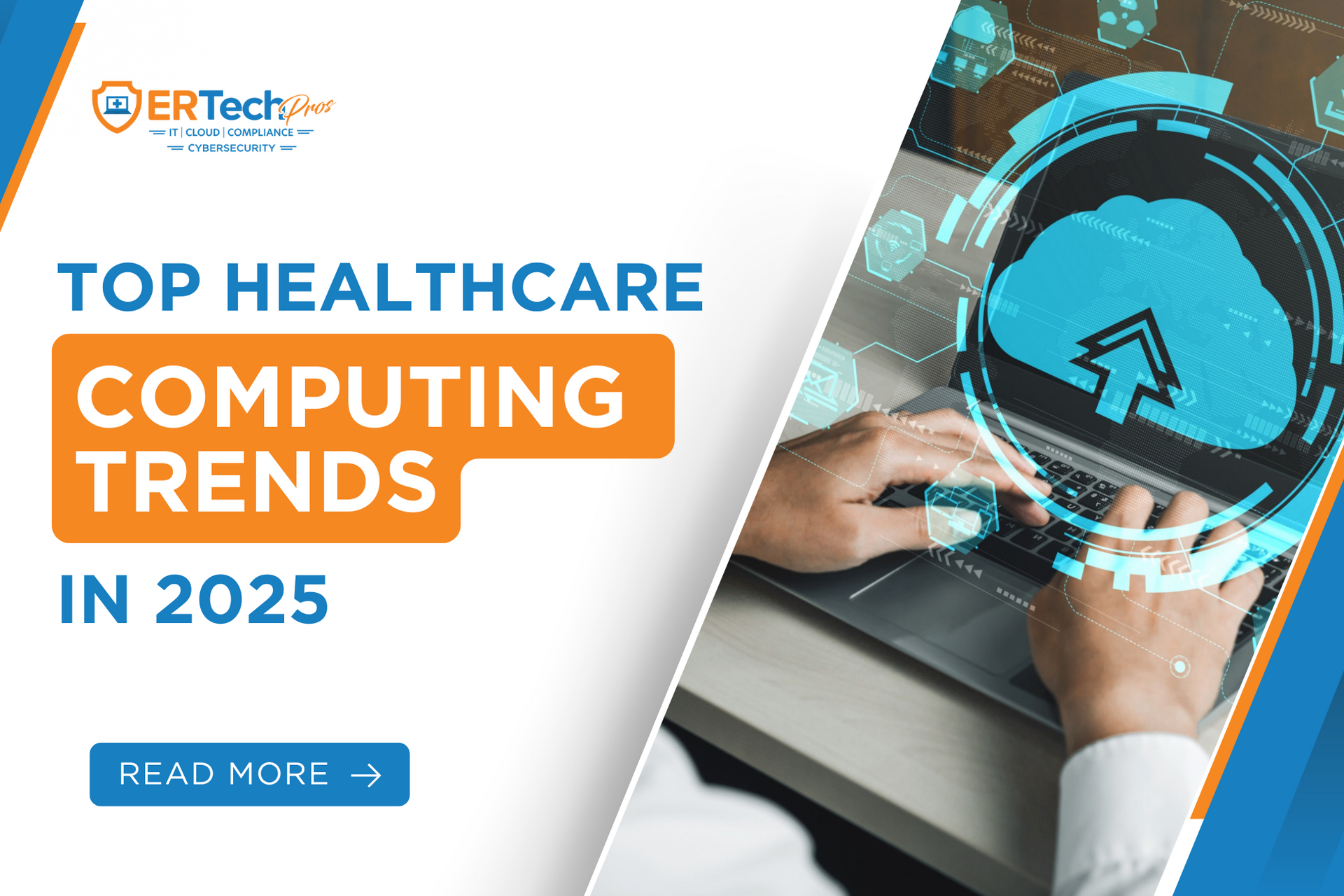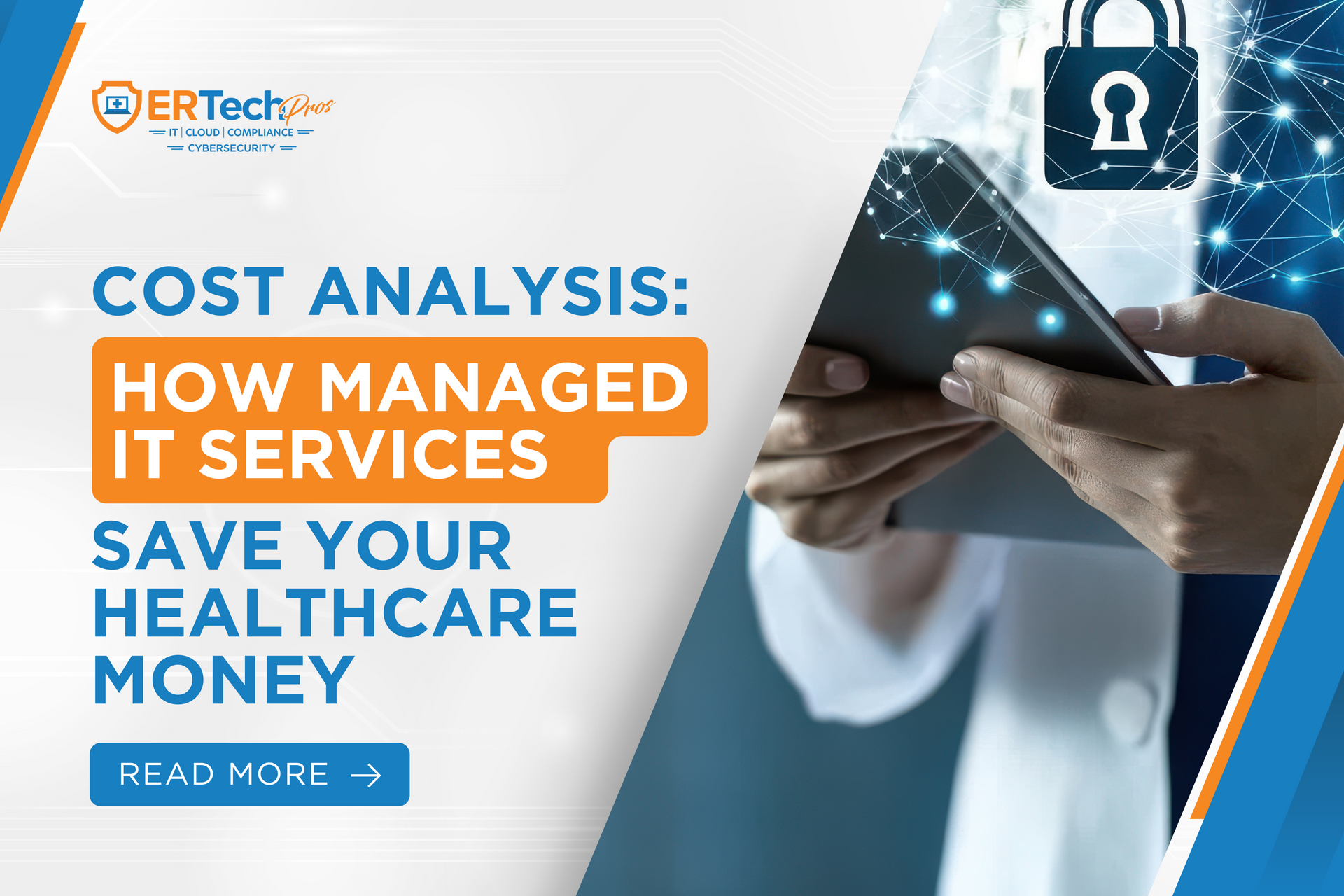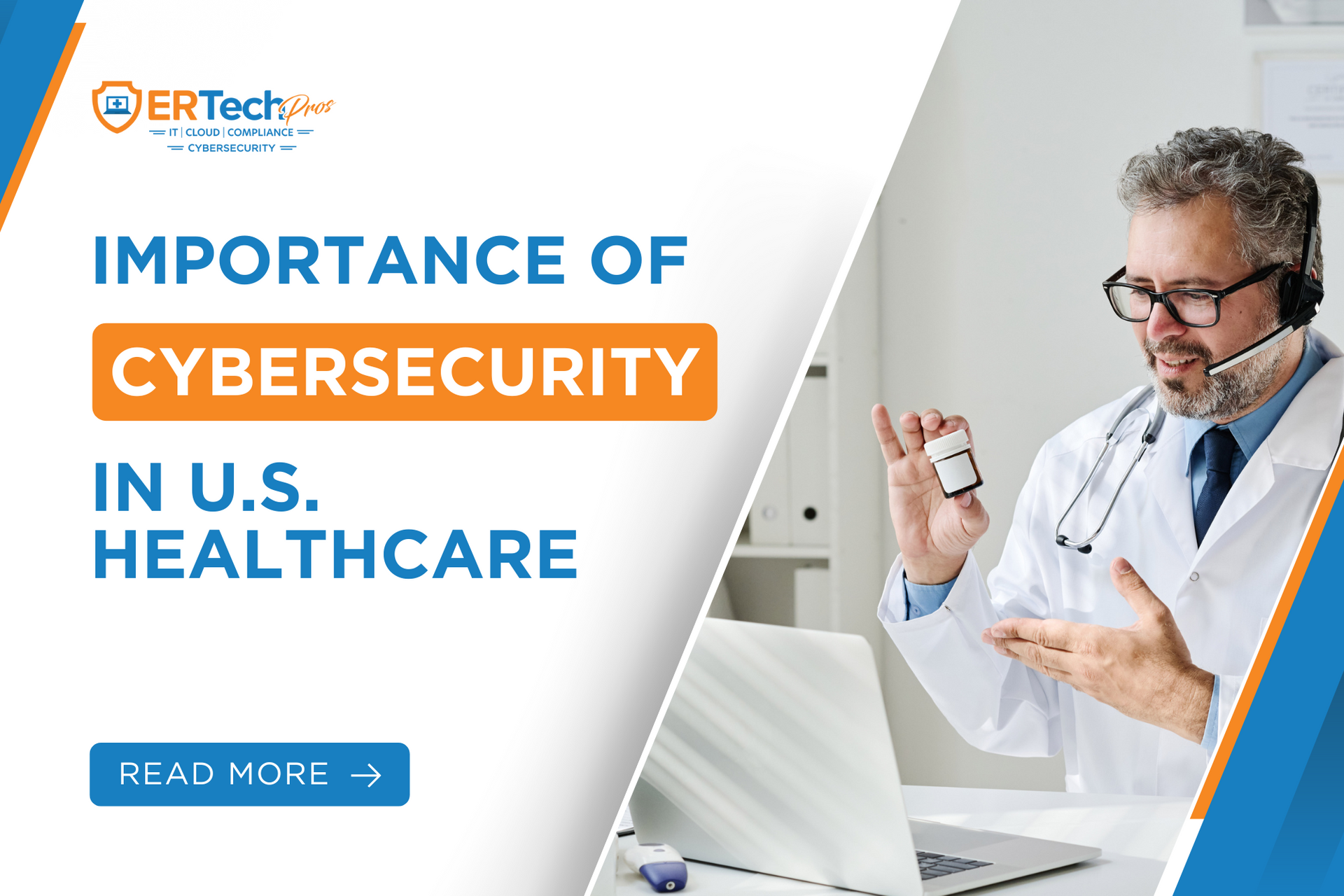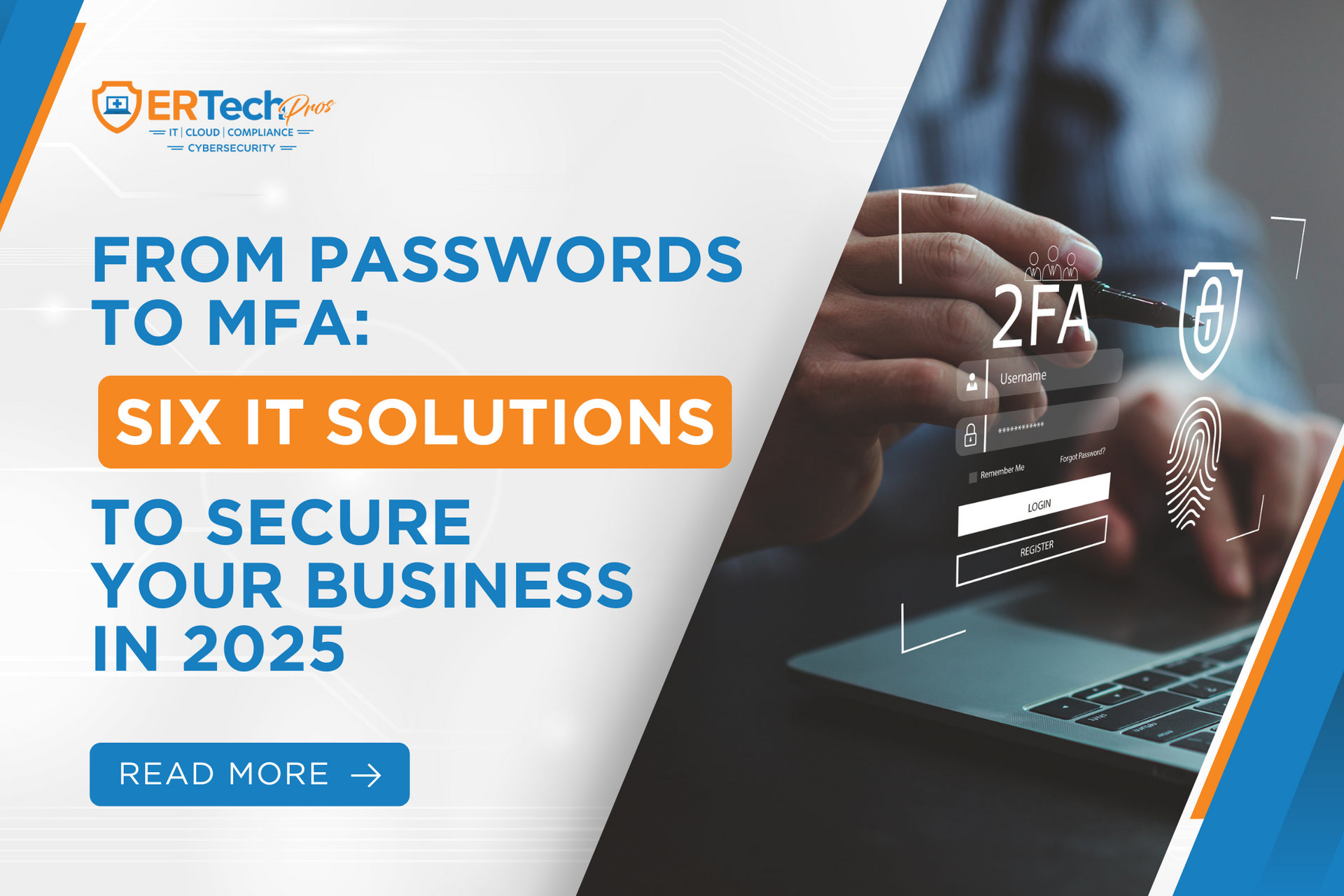When we look at healthcare cybersecurity threats, the primary target is typically patient health records. But there’s another target that’s just as vulnerable and valuable: your financial data.
Your organization handles an enormous amount of information every day, including patient billing details, insurance claims, payroll systems, credit card transactions, and vendor payments. A single breach can lead to massive financial losses, delayed reimbursements, and even legal consequences.
With over 25 years of experience in healthcare IT, we at
ER Tech Pros know the importance of securing every piece of healthcare data. We deliver the same high-level protection to your financial data as we do to patient health information with
managed cybersecurity strategies tailored to your exact needs.
Start Securing Your Systems
Why Is Healthcare Financial Data a Prime Target?
Cybercriminals go after your patient records
and
financial data. While healthcare organizations are improving their security of protected health information (PHI), financial systems often receive less attention. This, along with several other factors, makes your organization’s financial data particularly attractive to cybercriminals.
High-Value Data, High-Volume Activity
Healthcare organizations process a constant stream of financial transactions daily, and many of these run through outdated systems that lack
robust cybersecurity solutions, which aren’t built to withstand today’s cybersecurity threats in healthcare.
The Perfect Mix for Fraud
Financial data is a comprehensive profile of every patient and payer you work with, paired with personal identifiers like:
Outdated Tech and Fragmented Systems
More Data Means More Risk
The more data you collect and store, the more you risk losing. With regulations like HIPAA, HITECH, and PCI-DSS, healthcare organizations are under constant pressure to protect sensitive financial information.
The Cybersecurity Threats Targeting Your Data
Cybercriminals use sophisticated methods to swipe your data, but the initial steps to infiltrating it aren’t as high-tech as you’d think.
Phishing & Social Engineering
Phishing remains the most common method that attackers use to break in, with an estimated
3.4 billion spam emails sent every day. One click from an unsuspecting staff member can give hackers access to billing portals, payroll systems, or patient payment info.
How do you know which emails are legitimate and which aren’t? Here’s a video we made to help you easily spot the red flags:
Ransomware Attacks
Apart from exploiting software vulnerabilities, ransomware accesses your network when you click or download malicious attachments, ads, or suspicious links. Once activated, it freezes your medical records (or holds them ransom), which also brings billing and payroll to a stop.
Business Email Compromises (BEC)
BEC scammers are meticulous and crafty. They do their research and impersonate someone trusted from your company to convince you to:
- Redirect payroll deposits.
- Change payment details on vendor invoices.
- Steal large sums of money without triggering alarms.
Malware in Payment Systems
With
point-of-sale (POS) malware, hackers insert malicious code into outdated payment systems to skim credit card data, reroute transactions, or quietly siphon funds without being detected by cybersecurity programs.
Insider Threats
Sometimes, the risk is already inside. Internal users can unintentionally (or intentionally) expose sensitive financial data. You can adopt the best strategy for preventing these types of attacks with our
free security threat guide.
The Cost of a Breach
When financial data in healthcare is compromised, the fallout can hit hard and fast
Financial Losses Build Up
A breach can open the door to:
- Insurance fraud
- Lawsuits from patients or vendors
- Hefty regulatory fines
- The cost of patient refunds or identity monitoring services
The average healthcare
data breach costs as high as $4.88 million, and when financial systems are involved, that number climbs even higher.
Trust Gets Damaged
Patients count on providers to protect their personal and financial information. One breach can shake patient confidence, damage your reputation, and lead to long-term business losses.
Operations Halt
When your billing system is offline:
- You can’t submit your claims.
- You can’t process payments.
- You and your employees’ payrolls get delayed.
- Your revenue stalls.
Even a short disruption can cause long-term setbacks.
Regulatory Troubles
Following a breach, an investigation ensues, and if you’re found to be non-compliant with HIPAA, HITECH, or PCI-DSS, penalties may include civil fines, corrective action plans, and public reporting of violations.
Why Most Healthcare Providers Are Behind
If the consequences of a breach are so serious, why aren’t more providers better protected?
The truth is, even the most well-meaning organizations often face gaps in their cybersecurity posture.
Limited Investment in Cybersecurity Software
Cybersecurity is not a priority for some practices, especially smaller clinics and underfunded facilities. The costs of firewalls, advanced threat monitoring, and secure payment platforms are often not part of the budget.
No Dedicated IT or Cybersecurity Staff
Many providers rely on general IT support or outsourced vendors who aren’t specialized in healthcare threats. This makes it harder to spot financial system risks, enforce best practices, or respond quickly when something goes wrong.
A Patchwork Tech Stack
When you have different vendors or service providers doing various aspects of your financials, it’s easy for threats to slip in, especially if your partners don’t follow the same security standards.
Outdated Software & Delayed Updates
Legacy systems and unsupported software are perfect targets for cybercriminals. Unpatched vulnerabilities are one of the easiest ways for attackers to gain access.
No Regular Training or Risk Assessments
If your team isn’t regularly trained to spot phishing attempts or follow security protocols, you’re leaving yourself vulnerable. Likewise, if your organization hasn’t done a formal risk assessment in the last 12 months, chances are there are blind spots you haven’t discovered yet.
Stay Ahead, Stay Protected with ER Tech Pros
Having a cybersecurity plan is a good start. But partnering with a team that truly understands healthcare—that’s how you stay ahead of the threats.
For over 25 years, ER Tech Pros has been helping healthcare organizations like yours transform from vulnerable to impenetrable with
premium cybersecurity management services without the hefty price tag.
Purpose-Built for Healthcare
Whether you’re a small clinic, a specialty provider, or a large health network, we tailor each part of your cybersecurity plan to your systems, workflows, and risk areas.
In-Depth Financial Data Risk Assessments
Our team digs deep into your financial systems to identify and mitigate hidden risks, configuration issues, and security vulnerabilities.
24/7 Monitoring + Rapid Incident Response
Cybercriminals don’t follow business hours, and neither do we. We maintain regular immutable backups and around-the-clock monitoring to detect threats in real-time.
We’re more than just another IT company. We’re the healthcare IT specialists who understand that:
- Patient care comes first.
- Downtime isn’t an option.
- Compliance is non-negotiable.
- Your success is our success.
Every healthcare organization we’ve worked with started with a simple conversation about their challenges and goals. We'd love to have that call with you.
Let’s Get Ahead of Cyber Threats
Frequently Asked Questions
What makes healthcare’s financial data more vulnerable than the data in other industries?
Healthcare organizations manage both sensitive financial details and personal health data, making them valuable to cybercriminals. When combined with outdated systems, limited budgets, and strict regulations, the risk becomes even greater compared to other industries.
What’s a common cybersecurity mistake healthcare organizations make?
Many practices rely too heavily on antivirus software, which offers only one layer of protection. Many breaches happen through phishing, weak passwords, or unsecured third-party apps—areas that antivirus software can’t protect.
What can I do to protect my organization’s financial data?
Keep your systems updated, train your team to spot phishing, use MFA, and separate your financial information from clinical systems. For extra peace of mind, bring in a healthcare cybersecurity partner to help fill in the gaps.
Can ER Tech Pros work with smaller practices or outpatient clinics?
Absolutely. We tailor our cybersecurity solutions to meet your specific needs, size, and budget. Our goal is to make high-quality protection accessible to any healthcare organization.



